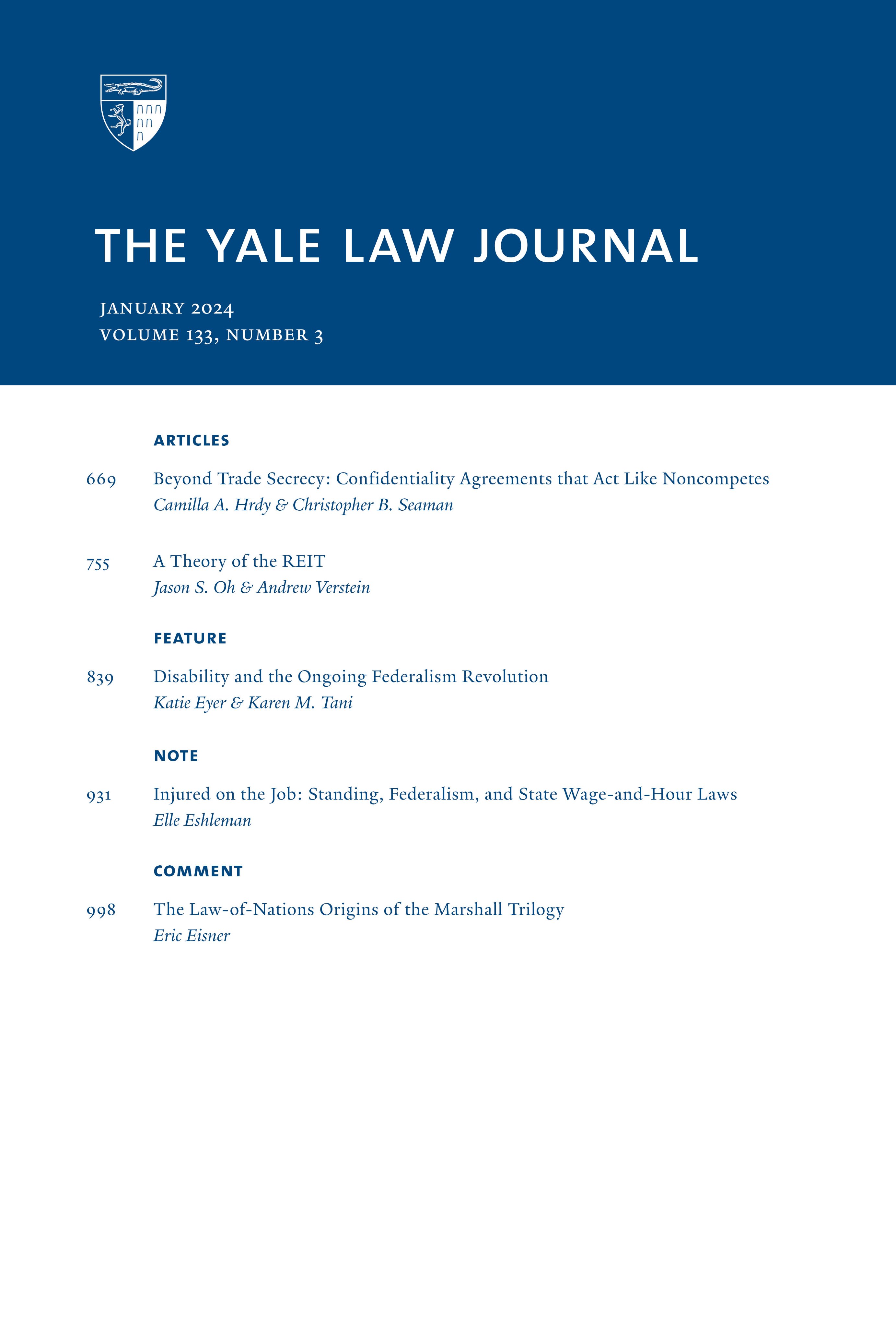反对结构错误自动逆转的案例
IF 5.2
1区 社会学
Q1 LAW
引用次数: 1
摘要
这是我的行为。本说明描述了管辖三种结构性错误的判例法,并表明自动撤销规则导致上诉法院缩小了争议权利的范围。为了避免这种影响,《说明》提出了一个新的框架,用于确定给定类型的错误是否属于“结构性”,从而需要自动逆转。自动撤销规则只适用于那些不会对判决产生影响的错误。本文章由计算机程序翻译,如有差异,请以英文原文为准。
The Case Against Automatic Reversal of Structural Errors
A B ST R ACT. This Note describes the case law governing three structural errors and shows that the rule of automatic reversal has led appellate courts to narrow the scope of the rights at issue. To avoid this effect, the Note proposes a new framework for determining whether a given type of error is "structural" and thus requires automatic reversal. The rule of automatic reversal should apply only to types of error that never contribute to a verdict.
求助全文
通过发布文献求助,成功后即可免费获取论文全文。
去求助
来源期刊

Yale Law Journal
LAW-
CiteScore
4.50
自引率
6.20%
发文量
0
期刊介绍:
The Yale Law Journal Online is the online companion to The Yale Law Journal. It replaces The Pocket Part, which was the first such companion to be published by a leading law review. YLJ Online will continue The Pocket Part"s mission of augmenting the scholarship printed in The Yale Law Journal by providing original Essays, legal commentaries, responses to articles printed in the Journal, podcast and iTunes University recordings of various pieces, and other works by both established and emerging academics and practitioners.
 求助内容:
求助内容: 应助结果提醒方式:
应助结果提醒方式:


